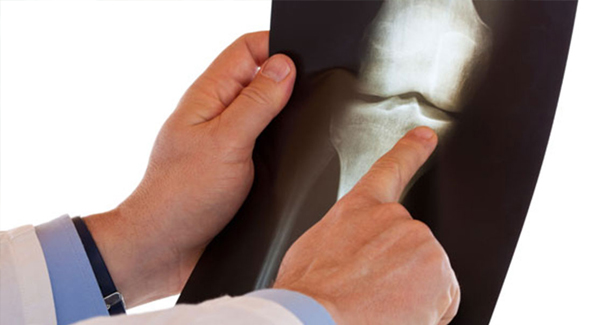Understand Your Joint Surgery Options
Regular exercise and a healthy weight are your best defense against arthritis pain and disability. But if your joints are past the point of no return, surgery may be an option. Having a basic understanding of common surgical procedures can help you have an informed discussion with your doctor about which type is best for you.
Arthroscopy
What is it?
Surgeons use this technique – which involves small incisions, specialized instruments and a tiny camera – to fix tears in soft tissues around the knee, hip, shoulder and other joints; repair damaged cartilage and ligaments; and remove broken, free-floating cartilage pieces.
Best candidates: Active people younger than 40 years.
Pros: For some injuries, may reduce pain and improve range of motion.
Cons: Based on data from dozens of studies, an international panel of experts concluded that arthroscopy is no better for arthritis, meniscus tears and other knee problems than sham surgery and should never be used to treat them. If your doctor suggests arthroscopy, get a second opinion or just say “no.”
Joint Resurfacing
What is it?
Unlike total joint replacement, this procedure replaces just part of the knee or hip joint. In the knee, surgeons replace only one of the knee’s three compartments with an implant, usually on the inside (medial) or outside (lateral) part. In the hip, the socket is replaced with a metal cup, and the damaged hip ball is reshaped and capped with a metal, dome-shaped prosthesis, like a crown on a tooth.
Best candidates: For the knee, older, less active patients with arthritis in only one knee compartment. For hips, men younger than 50 with a large build, especially athletes or those with physically demanding jobs
Pros: In the knee, this procedure can relieve pain and improve function with daily activities. In the hip, it may allow patients to participate in high-impact sports and activities that require flexibility, such as martial arts and yoga. Conserving the thighbone may make future hip surgery easier.
Cons: Very challenging to perform, with a higher complication and failure rate than conventional implants, and the metal-on-metal hip system poses the same serious health risks as other all-metal hip replacement systems do. Not for women or men with a slender build or with osteoporosis. A new ceramic implant (not yet available in the U.S.) may be suitable for some people and eliminate the problem of metal debris.
Osteotomy
What is it?
The procedure involves cutting and removing bone or adding a wedge of bone near a damaged joint. In the knee, an osteotomy shifts weight from an area damaged by arthritis to an undamaged area. In the hip, it is often used to correct misalignment (hip dysplasia) that occurs early in life.
Best candidates: Patients in their 30s and younger or who are younger than generally recommended for total joint replacement.
Pros: Can halt damage and delay the need for a joint replacement for 10 to 15 years.
Cons: Osteotomies are not simple, warns Robert L. Barrack, MD, chief of staff for orthopedic surgery at Barnes Jewish Hospital in St. Louis. “Because the surgery is so complex and highly specialized, only a small percentage of surgeons are best suited to perform it.”
Synovectomy
What is it?
In people with inflammatory arthritis, the lining of the joints – the synovium – can become inflamed or grow too much, damaging surrounding cartilage and joints. In this procedure surgeons remove most or all of the affected synovium, either in a traditional, open surgery or using arthroscopy.
Best candidates: People with limited cartilage damage in the affected area who have tried anti-inflammatory medications but continue to have inflammation or overgrowth of the synovium around the knee, elbow, wrist, fingers or hips.
Pros: May temporarily relieve pain and improve function; people who have had the procedure may be able to reduce their use of anti-inflammatory drugs.
Cons: Open synovectomy can have serious complications, may limit range of motion and provide only temporary pain relief. Arthroscopic synovectomy is less expensive and may have fewer complications.
Arthrodesis, or Fusion
What is it?
Surgeons use pins, plates, rods or other hardware to join two or more bones in an ankle, wrist, thumb, finger or the spine, making one continuous joint. Over time the bones grow together and lock the joint in place.
Best candidates: People with severe joint damage from OA or inflammatory arthritis.
Pros: Results should last a lifetime, though revisions are often needed. People who have weight-bearing joints fused can often safely take part in high-impact physical activities.
Cons: Fusing joints reduces their motion and flexibility. It also changes the joint’s normal biomechanics, which can put stress on surrounding joints and often leads to arthritis in other areas as well as chronic pain. It should never be a treatment for low back pain. Physical therapy and exercise are more effective, with no serious complications.
Total Joint Replacement (TJR), or Total Joint Arthroplasty
What is it?
The damaged joint is replaced with an implant that mimics the motion of the natural joint. Implants are made from combinations of metal, plastic and/or ceramic components.
Best candidates: People with severe joint pain who haven’t been helped by other treatments. Improvement in implant durability means that TJR is more common in younger people than in the past.
Pros: Strong, proven track record for safety and success; reduces pain and improves mobility, daily functioning and quality of life.
Cons: All artificial joints can wear out, which may require joint revision surgery, which is more expensive and less successful than the original surgery. Implants made entirely of metal (called metal-on-metal) can release metal ions that may damage bone and cause other health problems. Ask before surgery about an implant’s track record. TJR is not usually recommended for people who have weak bones or who are obese.
Minimally Invasive TJR
What is it?
This technique replaces a damaged joint but uses shorter incisions than in a traditional TJR. Less muscle is cut and reattached. Thomas Sculco, MD, surgeon-in-chief emeritus at Hospital for Special Surgery in New York City, says “minimally invasive” is something of a misnomer, though, because the procedure “still involves cutting bone, realigning the soft-tissue mechanism that supports the joint and placing the implant.”
Best candidates: Active, normal-weight people younger than 50 years.
Pros: Less pain, less time in the hospital and quicker recovery than with conventional joint replacement.
Cons: Minimally invasive TJR is challenging to perform and has higher complication rates than traditional TJR, according to Dr. Barrack. Look for an orthopedic surgeon who does a high volume of these procedures.
Joint Revision
What is it?
Surgery to remove a failed, infected or worn-out implant and replace it with a new one.
Best candidates: People with a damaged artificial joint. Implants can last 15 to 20 years, but those who get them as young adults may eventually need one or more revisions.
Pros: Pain relief and improved mobility, strength and coordination.
Cons: Because of the alterations surgeons make to bones during an original joint replacement, revision procedures are more complex and less successful than initial replacement surgeries. Complete pain relief and return to full function may not be possible. Sometimes surgeons need to take a bone graft from another area to complete the operation. Possible complications include a higher fracture risk after surgery, and in the hip, dislocation and uneven leg lengths.

Stay in the Know. Live in the Yes.
Get involved with the arthritis community. Tell us a little about yourself and, based on your interests, you’ll receive emails packed with the latest information and resources to live your best life and connect with others.


